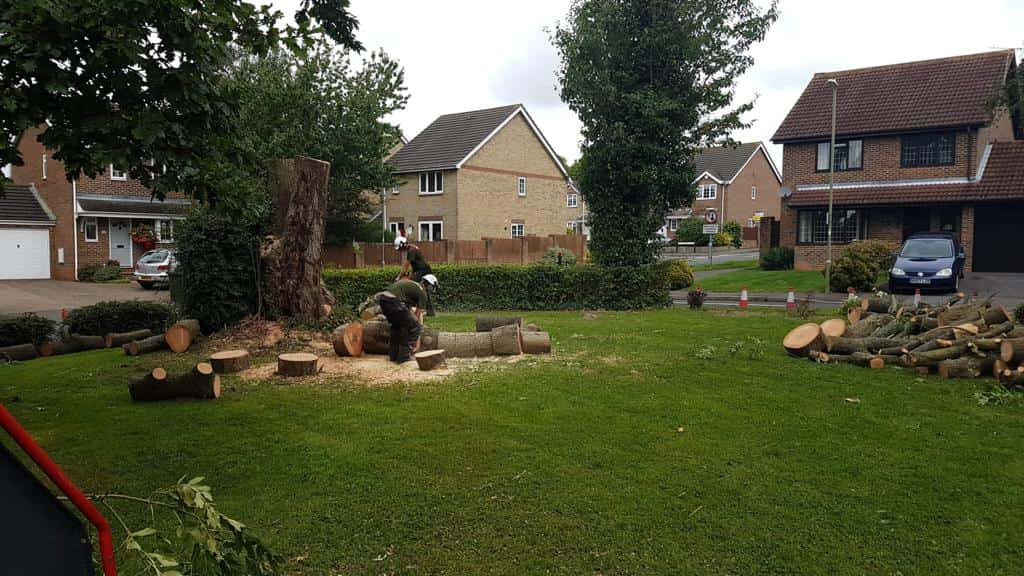Trees are living organisms that go through natural stages of growth, maturity, and eventual decline. Each stage presents its own challenges, and at certain points, professional intervention becomes vital to ensure safety, health, and long-term sustainability. At EM Tree Surgery Nailsea, we’ve worked with a wide variety of tree species across Nailsea, Bristol, helping homeowners and landowners maintain their trees at every stage of life. Understanding the tree lifecycle — and knowing when tree surgery becomes necessary — is key to responsible management and preservation.
Understanding the Tree Lifecycle
Just like people, trees experience a lifecycle that begins with establishment, followed by growth, maturity, and finally decline. Recognising what happens during each phase helps determine when care or corrective work may be required.
1. The Establishment Phase
This is the earliest stage of a tree’s life, when roots develop and the structure begins to form. Young trees are highly vulnerable to environmental stresses such as drought, poor soil conditions, or mechanical damage from mowing or wind.
Key Focus: Support and protection.
- Ensure adequate watering and mulching.
- Monitor for signs of stress, such as yellowing leaves or weak stems.
- Prune lightly to promote balanced growth and strong branch structure.
Although major tree surgery isn’t typically needed at this stage, formative pruning by professionals like EM Tree Surgery Nailsea can help create a stable framework that reduces the risk of future problems.
2. The Growth Phase
During this stage, the tree experiences rapid expansion in both height and canopy spread. Branches develop quickly, and the tree becomes more established in its environment. However, without correct management, issues such as poor branch attachment, crossing limbs, or uneven growth can occur.
Key Focus: Structural development and maintenance.
- Regular pruning to guide growth and prevent overcrowding.
- Removal of weak or rubbing branches.
- Inspection for early signs of pests or diseases.
Intervention during this phase ensures the tree grows into a strong, well-balanced form — preventing the need for more invasive surgery later.
3. The Maturity Phase
Mature trees are at their most impressive, offering full shade, habitat, and visual appeal. However, as growth slows, the focus shifts from expansion to preservation. This is often when the first signs of wear, decay, or damage become visible.
Key Focus: Monitoring and corrective care.
- Inspect for cracks, cavities, or fungal growth.
- Manage deadwood and reduce weight in overextended branches.
- Address any signs of decline before they pose a safety risk.
Tree surgery often becomes necessary at this point. Procedures such as crown reduction, deadwood removal, or selective pruning can help maintain health, balance, and stability. At EM Tree Surgery Nailsea, we assess each tree carefully to determine the best approach, ensuring minimal stress while maximising long-term health.
4. The Decline Phase
Over time, all trees begin to age and weaken. Natural decay sets in as nutrient uptake slows, and branches may start to die back. While many older trees can still be preserved safely, others may require more extensive work or even removal to prevent hazards.
Key Focus: Safety and preservation where possible.
- Remove dead or unstable branches.
- Monitor for root instability or hollowing.
- Reduce canopy weight to prevent collapse.
- Consider habitat retention for wildlife if safe to do so.
Professional tree surgeons can evaluate whether a tree can be retained through strategic reduction or whether felling is the safest option. The goal is always to retain as much of the tree as possible while ensuring safety for people and property nearby.
When Tree Surgery Becomes Necessary
Tree surgery isn’t just for emergencies — it’s an essential part of proactive tree care. Knowing when to call in professionals can make the difference between saving a tree and losing it altogether.
Signs That a Tree Needs Surgery
- Dead or Dying Branches: Indicate internal decay or disease.
- Cracks or Splits in the Trunk: Potential signs of instability or structural weakness.
- Fungal Growth: Often signals root or heartwood decay.
- Leaning or Movement: May suggest root damage or soil erosion.
- Reduced Leaf Coverage: A symptom of declining health or pest infestation.
Prompt attention to these signs prevents hazards and encourages recovery. At EM Tree Surgery Nailsea, we use professional assessment techniques to identify the most appropriate intervention — whether that’s pruning, bracing, or full removal.
The Benefits of Timely Tree Surgery
Carrying out tree surgery at the right time provides a range of benefits for both the tree and its surroundings.
Key Benefits
- Promotes Longevity: Removing diseased or damaged parts extends the tree’s life.
- Improves Safety: Reduces the risk of falling limbs or unstable trunks.
- Enhances Aesthetics: Maintains an attractive, well-balanced canopy.
- Encourages Regrowth: Targeted pruning stimulates new, healthy growth.
- Protects Surrounding Property: Prevents overhanging branches from damaging roofs, walls, or power lines.
Tree surgery ensures that each tree continues to thrive safely within its environment while maintaining its ecological and visual value.
Professional Care Throughout the Tree’s Lifecycle
Every tree requires different levels of attention depending on its age, species, and condition. Professional input ensures that care is both appropriate and effective. At EM Tree Surgery Nailsea, we work with homeowners and landowners across Nailsea and Bristol to maintain trees responsibly from planting to maturity and beyond. Our expert knowledge allows us to intervene at the right time with precision, care, and respect for the environment.
Conclusion
Trees are living investments that evolve through distinct stages, each requiring careful management to ensure health and safety. Knowing when tree surgery becomes necessary — whether to shape growth, correct structural issues, or manage decline — is essential for preserving both beauty and stability. For homeowners and property managers in Nailsea and the wider Bristol area, EM Tree Surgery Nailsea provides professional, tailored tree care to support every stage of a tree’s lifecycle — from flourishing growth to dignified maturity.
Call us on: 01275 402 923
Click here to find out more about EM Tree Surgery Nailsea
Click here to complete our contact form and see how we can help with your trees needs.

